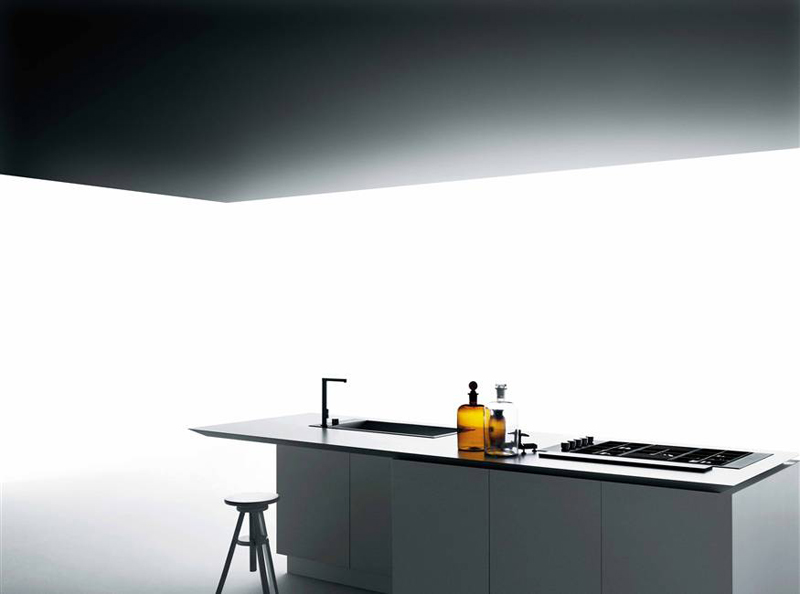
[Image source: Boffi]
Did the bartender over-serve us on martinis again, or are things getting a little too precious in the design world? We recently spent some time in NYC where we toured some of our favorite cabinet showrooms, only to find that the latest designs have become, well, a bit too refined.
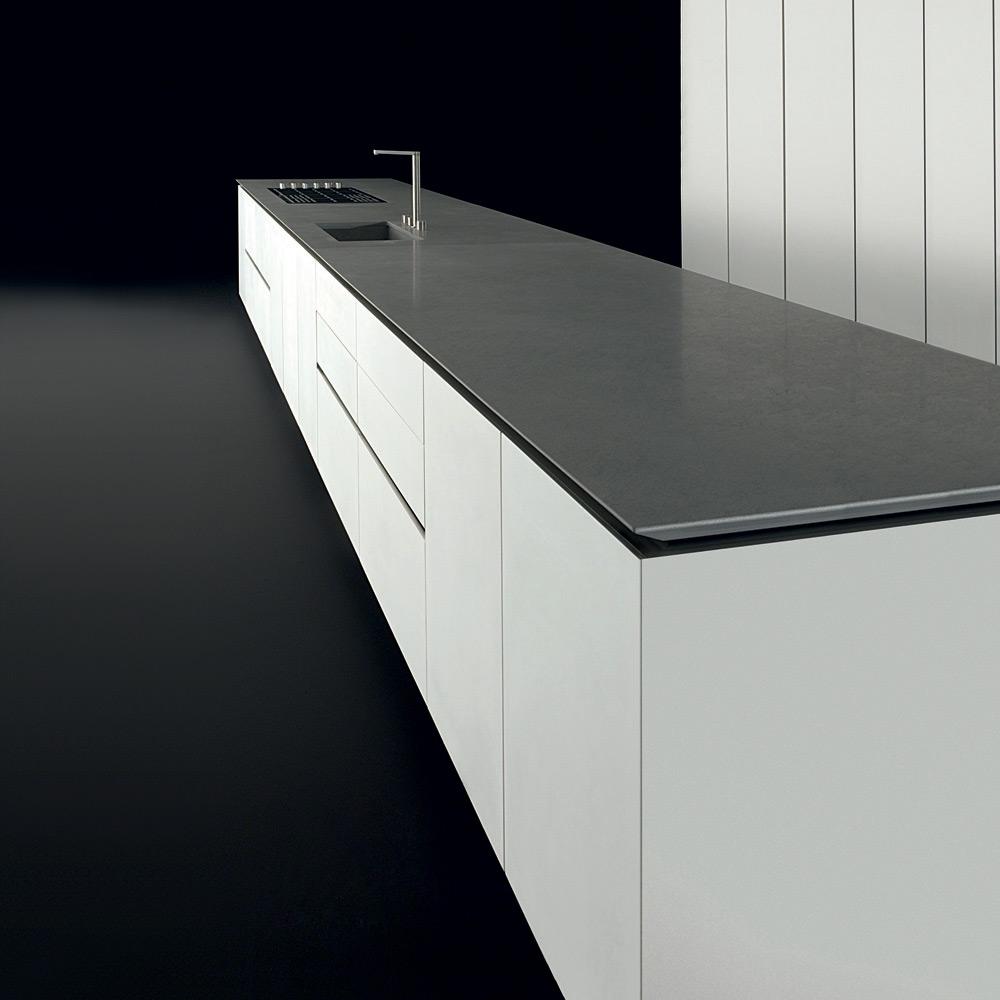
[Image source: Boffi]
Meticulously mitered 3-way corners, flawless stainless steel panel faces, and minimal pulls concealed to the point of needing a road-map to find them. Make no mistake, these kitchen showrooms looked drop-dead gorgeous. But the more we kicked the tires on these eye-catching cabinet packages, the more we wondered how functional they actually are. Exposed stainless steel sink basins sitting on a stainless steel workbench? Really? How’s the garbage disposal look under there? Is there an invisible fence that gives kids under the age of eleven an electric shock before they can smear their grubby fingerprints on the polished side panels? The whole experience just begged a certain question: Does anyone actually buy these kitchens with the intention of cooking in them? The majority of the kitchen designs just seemed so fussy.
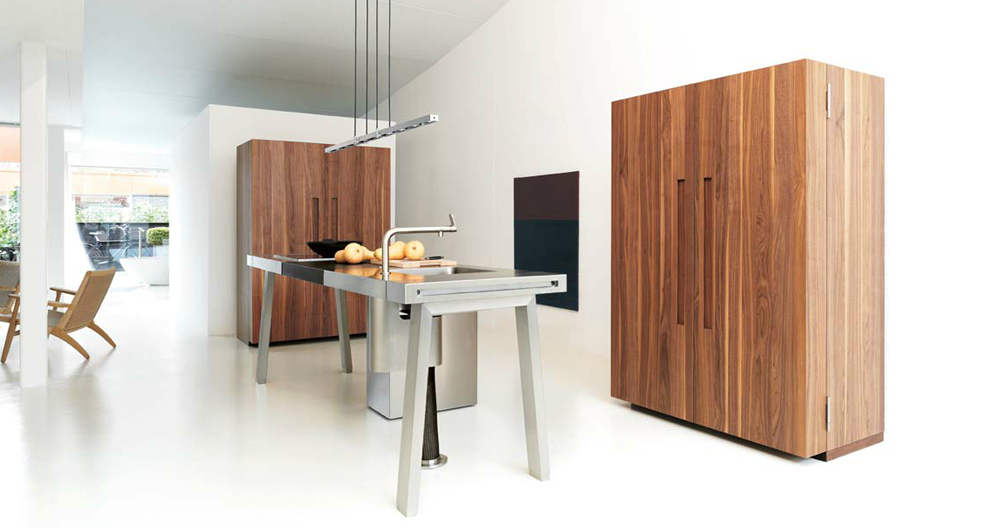
[Image source: Bulthaup]
Granted, maybe we were tainted from our dining experience the night before, when the table next to us spent the evening debating the wait staff over the exact origin of Limoncello. Was it the Amalfi coast or Siciliy? Judging from the dispute, human lives seemed to be dependent on a precise answer. It’s lemon zest and simple syrup, people. You drink it precisely to stop worrying about every little detail in life.
Whether it’s a kitchen design or a digestif, we’re worried. Very worried. How is it that we’ve all become so particular that our dream kitchens would be adulterated by a can of tomatoes left on the counter? How is it that the debatable origin of Limoncello gives us such anxiety that we feel compelled to monopolize the waiter all night, who’s struggling just to get the plates out while they’re hot. When did we all get so persnickety?
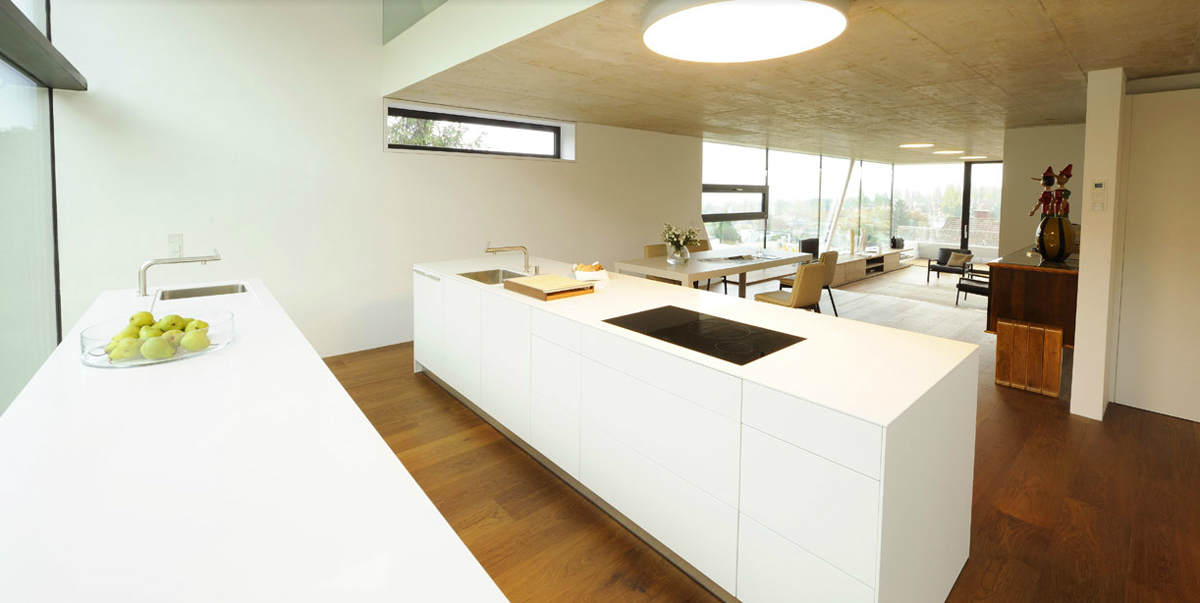
[Image source: Bulthaup]
Our main concern is that this isn’t just design hyperbole; it’s not just the swinging pendulum of fad and fashion. Rather, it seems that we’ve evolved into an esoteric (and troubling) mindset. It seems like we’ve replaced function and utility with art. Don’t get us wrong, art is important. But a kitchen is meant to be cooked in, and when the function of a kitchen is superseded and replaced by design fetish, it fails. So with today’s post we figured we’d do our small part to get the ship back on course. We’ve come up with five tenets that guide our own philosophy of kitchen design. Here goes:
1. The kitchen is not an art exhibit.
A kitchen is intended for cooking and eating. It’s that simple.
2. Accept the evidence of life.
A well designed kitchen should be able to visually and functionally accommodate a stack of cookbooks left out on the counter, a bowl of fruit waiting to ripen, the remnants from last night’s cocktails, and Johnny’s half eaten monster cookie. We’re not suggesting that this allows the inhabitants to simply leave everything out wherever they like. A well designed kitchen should have a place for everything to go at the end of the day, but it should also accept the evidence of life.
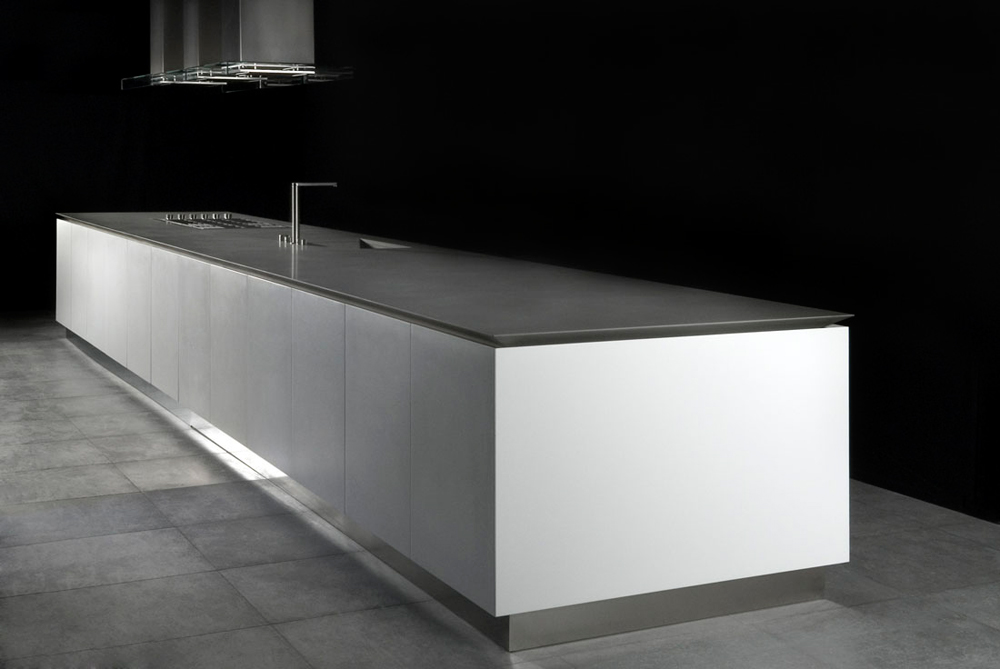
[Image source: Bulthaup]
3. Embrace weathering.
A kitchen should look different after a decade of being lived in. The handles will patina from repeated use. Certain end-panels may fade a bit from direct sunlight. Wine rings may stain the countertop and remind you of that fantastic dinner party. A weathered kitchen is the sign of a life well-lived.
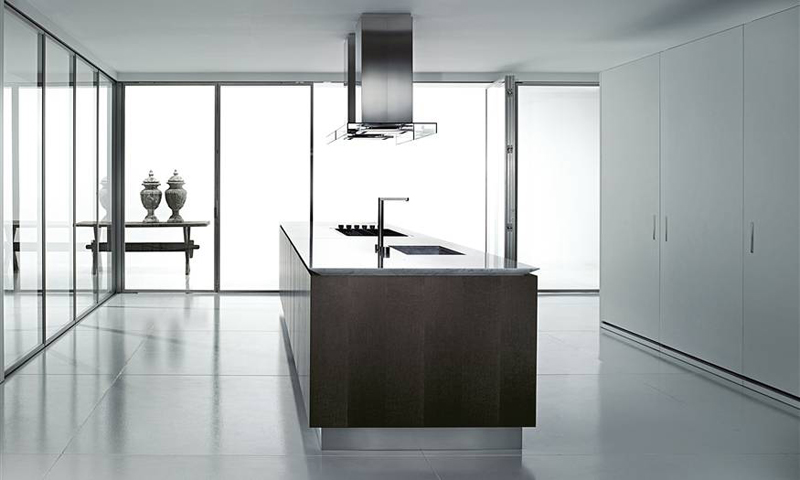
[Image source: Boffi]
4. Perfectly imperfect.
These are the elements that give a kitchen its soul. It could be that funny corner turned into a breakfast nook or the worn butcher block table from your grandmother’s farm house that doesn’t match anything.
5. Grit is good.
A little bit of grit gives a kitchen authenticity. Maybe it’s an irregular wood grain pattern on the cabinet doors or the collection of scratches on the countertop where you like to do your chopping. The grit tells a story and makes the kitchen your own.

Ultimately, a kitchen should be purposeful, accommodating the realities of lifestyle. For us, the beauty of a kitchen is derived from these characteristics of everyday life; good design responds to these factors.
Cheers from Team BUILD

[Image source: 52 Kitchen Adventures]





